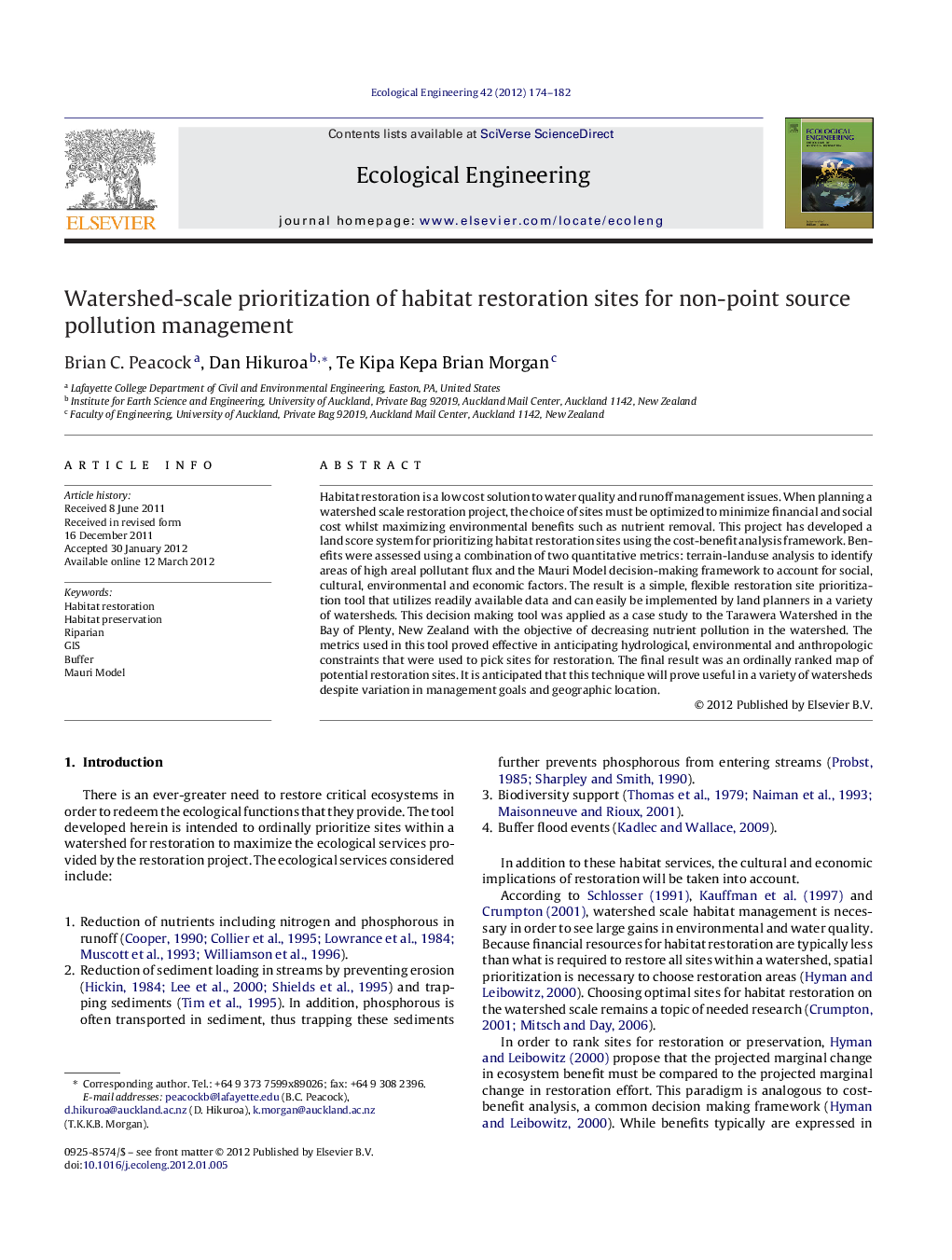| Article ID | Journal | Published Year | Pages | File Type |
|---|---|---|---|---|
| 6302776 | Ecological Engineering | 2012 | 9 Pages |
Abstract
Habitat restoration is a low cost solution to water quality and runoff management issues. When planning a watershed scale restoration project, the choice of sites must be optimized to minimize financial and social cost whilst maximizing environmental benefits such as nutrient removal. This project has developed a land score system for prioritizing habitat restoration sites using the cost-benefit analysis framework. Benefits were assessed using a combination of two quantitative metrics: terrain-landuse analysis to identify areas of high areal pollutant flux and the Mauri Model decision-making framework to account for social, cultural, environmental and economic factors. The result is a simple, flexible restoration site prioritization tool that utilizes readily available data and can easily be implemented by land planners in a variety of watersheds. This decision making tool was applied as a case study to the Tarawera Watershed in the Bay of Plenty, New Zealand with the objective of decreasing nutrient pollution in the watershed. The metrics used in this tool proved effective in anticipating hydrological, environmental and anthropologic constraints that were used to pick sites for restoration. The final result was an ordinally ranked map of potential restoration sites. It is anticipated that this technique will prove useful in a variety of watersheds despite variation in management goals and geographic location.
Keywords
Related Topics
Life Sciences
Agricultural and Biological Sciences
Ecology, Evolution, Behavior and Systematics
Authors
Brian C. Peacock, Dan Hikuroa, Te Kipa Kepa Brian Morgan,
